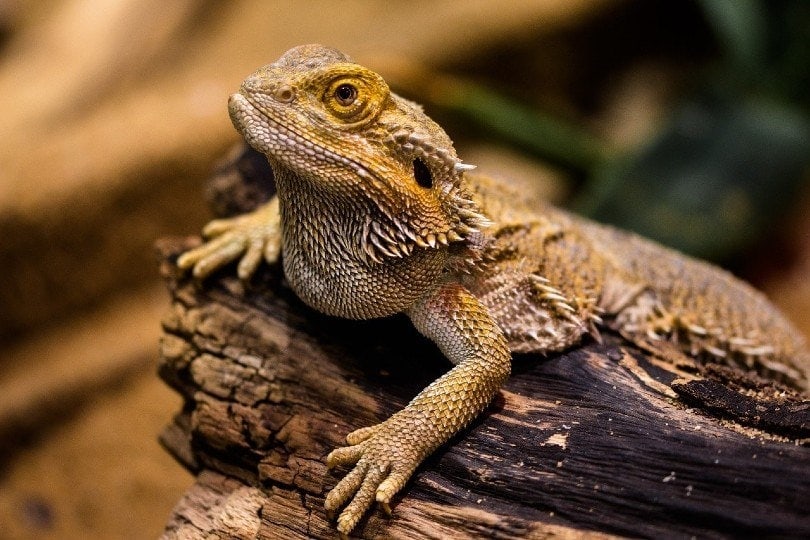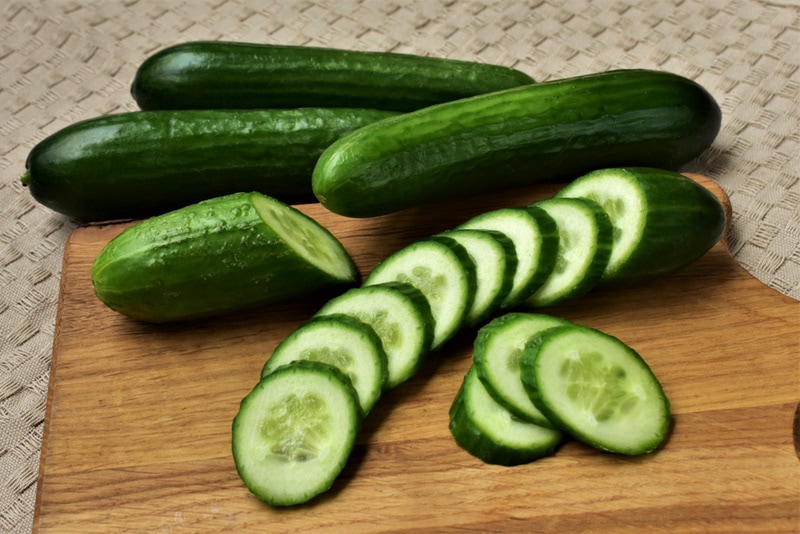How to Bond With Your Bearded Dragon: 7 Simple Tips

Updated on

Bearded dragons are fascinating creatures that make for great pets. They’re docile, curious, and have unique personalities that make them a joy to be around. As a bearded dragon owner, you may be wondering how to bond with your pet and develop a deeper connection.
Fortunately, bonding with your bearded dragon is easier than you might think. And here are a few easy tips on how to bond with your bearded dragon that will help you establish a strong relationship with your scaly friend. So, whether you’re a new owner or a seasoned reptile enthusiast, read on.
The 7 Tips for Bonding With Your Bearded Dragon
1. Understand Why You Should Bond With Your Bearded Dragon
Bonding with your bearded dragon isn’t just about cuddling and playing with them. It’s a large aspect of their overall well-being. A strong bond with your bearded dragon can help them feel secure, reduce stress, and improve their overall health. When you bond with your bearded dragon, you establish trust and develop a deeper understanding of their needs and preferences. This allows you to provide them with a better quality of life and ensure that they are happy and healthy.

2. Learn Your Bearded Dragon’s Body Language
To bond with your bearded dragon, it’s essential to understand their body language. Bearded dragons are not vocal creatures, so they rely heavily on body language to communicate their feelings and emotions. By understanding your bearded dragon’s body language, you can learn to interpret their moods and respond appropriately.
For example, if your bearded dragon is puffing up their beard and hissing, it’s likely a sign that they’re feeling threatened or stressed. In contrast, if your dragon is relaxed and basking in the sun, it’s a sign that they’re happy and content.
To learn your bearded dragon’s body language, spend time observing them in different situations. Watch how they react to different stimuli, such as loud noises or sudden movements. Over time, you will become more familiar with your pet’s body language and be better equipped to respond to their needs. It’ll come more instinctively as you begin to do it more often, just like with getting to know another person.
3. Spend Quality Time
Spending quality time with your bearded dragon is also one of the best ways to bond with them. Many people are surprised to learn that these dragons are social creatures and enjoy interacting with their owners. There are many ways to spend time with your dragon, such as taking them for walks or cuddling with them on the couch.
When spending time with your bearded dragon, make sure to provide a comfortable and safe environment. Bearded dragons are sensitive to temperature changes, so ensure that their enclosure is warm and well-lit.
Another great way to spend time with your bearded dragon is by providing them with enrichment activities. For example, you can create a small obstacle course or hide treats for them to find. These activities not only provide mental stimulation but also help strengthen your bond with your bearded dragon.

4. Make Feeding Time Fun
Feeding your dragon by hand is an excellent way to bond with them. They’re omnivores and enjoy a variety of foods, including insects, vegetables, and fruits. By hand-feeding your dragon, you not only provide them with a nutritious meal but also establish trust and deepen your bond. When hand-feeding your pet, make sure to use tongs or tweezers to avoid accidentally being bitten.
5. Create a Comfortable Environment
Creating a comfortable environment for your dragon is essential for their overall well-being. Bearded dragons require a warm and humid environment to thrive. Ensure that their enclosure is well-lit with a basking spot and a cooler area. You can also provide them with a hiding spot or a hammock to rest on. Additionally, ensure that their enclosure is clean and free from any harmful bacteria or parasites.

6. Play With Your Bearded Dragon
Playing with your bearded dragon is a fun and engaging way to bond with them. They enjoy playing with their owners and toys. Some great toys for bearded dragons include balls, ropes, and mirrors. When playing with your dragon, make sure to supervise them and avoid any toys that could be a choking hazard.
7. Train Your Bearded Dragon
Training your bearded dragon is another excellent way to bond with them. You may be surprised to find that these animals are intelligent creatures and can learn a variety of tricks, such as shaking hands (similar to a dog or cat giving a paw) or jumping through hoops. Training your dragon not only provides mental stimulation but also strengthens your bond. When training your dragon, use positive reinforcement techniques such as treats or praise.

Common Mistakes to Avoid When Bonding with Your Bearded Dragon
One of the most significant mistakes is handling your bearded dragon too much or too roughly. While bearded dragons enjoy being handled, excessive handling can lead to stress and even illness, believe it or not.
Another mistake is not providing a comfortable and safe environment for your dragon. These dragons require specific temperature and humidity levels to thrive, so ensure that their enclosure is properly set up. Finally, avoid feeding your bearded dragon a diet that is too high in protein or fat. A balanced diet of insects, vegetables, and fruits is essential for their overall health. Let’s discuss a bit more about how to take care of these dragons. Not only can this improve your bonding efforts, but it’ll ensure that you’re giving your bearded dragon the best life possible.
The Ideal Environment for Your Bearded Dragon
Creating the perfect habitat for your dragon is crucial to their health and happiness. These reptiles need a lot of space to move around, so the bigger the enclosure, the better. The average dragon will grow to about 16 to 24 inches in length and will weigh about 400 to 500 grams. So, a minimum size for an adult bearded dragon enclosure is 4 feet long, 2 feet wide, and 2 feet tall. However, if you can provide more space, your dragon will appreciate it.
When it comes to the type of enclosure, there are a few options to consider. Glass aquariums and plastic tubs are popular choices, but you can also build a custom enclosure out of wood or PVC. Whatever type of enclosure you choose, make sure it has proper ventilation and a secure lid to prevent your bearded dragon from escaping.
Inside the enclosure, you will need to provide a few key elements. A basking area with a heat lamp and UVB light is essential, as well as a cooler area where your bearded dragon can retreat to if they get too hot. You should also provide a hiding spot, such as a cave or log, and a shallow water dish for soaking and drinking.
Feeding Your Bearded Dragon

As mentioned above, bearded dragons are natural omnivores, so they survive on meat and plant food. A varied diet is important to ensure they get all the nutrients they need. So, in general, adult bearded dragons should be fed a diet that consists of 80% vegetables and 20% protein, while juveniles should be fed a diet that consists of 60% protein and 40% vegetables.
Some good vegetable options include mustard greens, collards, and turnip greens (and other types of leafy greens). You can also feed your bearded dragon small amounts of fruits like strawberries, raspberries, and blueberries.
For protein, you can feed your dragon insects like crickets, mealworms, and dubia roaches. You can also feed them small amounts of cooked chicken or fish. It’s important to avoid feeding your bearded dragon insects that are too big, as they can cause impaction.
Dragons should be fed once a day, with insects offered 2 to 3 times a week. You should also provide a calcium supplement to help prevent metabolic bone disease.
Common Health Issues and How to Prevent Them
Bearded dragons are generally healthy pets, but they can still experience health issues from time to time. Some common health issues include metabolic bone disease, respiratory infections, and parasites.
To prevent these issues, it’s important to provide a clean and healthy environment for your bearded dragon. This includes regular cleaning of their enclosure, providing a varied and nutritious diet, and keeping their temperature and humidity levels within the appropriate range.
If you do notice any signs of illness, such as lethargy, loss of appetite, or difficulty breathing, take your bearded dragon to a reptile veterinarian for a checkup.
Grooming and Hygiene for Your Bearded Dragon

Bearded dragons don’t require a lot of grooming, but there are a few things you can do to keep them clean and healthy. Regular cleaning of their enclosure is important to prevent the buildup of bacteria and parasites. You should also provide a shallow dish of water for your bearded dragon to soak in, which can help with shedding.
These dragons also shed their skin periodically, so it’s important to provide a humid hide for them to use during this process. This can be a small box filled with damp moss or simply paper towels.
Bearded Dragon FAQs
How big do bearded dragons actually get?
Bearded dragons can grow up to 2 feet in length, depending on their sex and subspecies.
How long do bearded dragons live?
Bearded dragons can live up to 20 years with proper care.
Do bearded dragons make good pets for kids?
Bearded dragons can make great pets for responsible children, but it’s very important for parents to supervise and assist with care, especially for kids under 14 years old.
Wrapping Things Up
Bonding with your bearded dragon is an essential aspect of their overall well-being. Bearded dragons are fascinating and unique pets that can provide years of enjoyment for their owners. By understanding their needs and providing proper care, you can ensure that your bearded dragon stays healthy and happy for years to come.
Other ways to bond include feeding them by hand, playing with them, and training them to perform fun tricks. These animals are fairly easy to take care of and they are more social than you may realize. So if you plan on getting a bearded dragon, be prepared to make an effort to bond with it, as this will definitely improve its quality of life and yours.
Featured Image Credit: New Africa, Shutterstock










